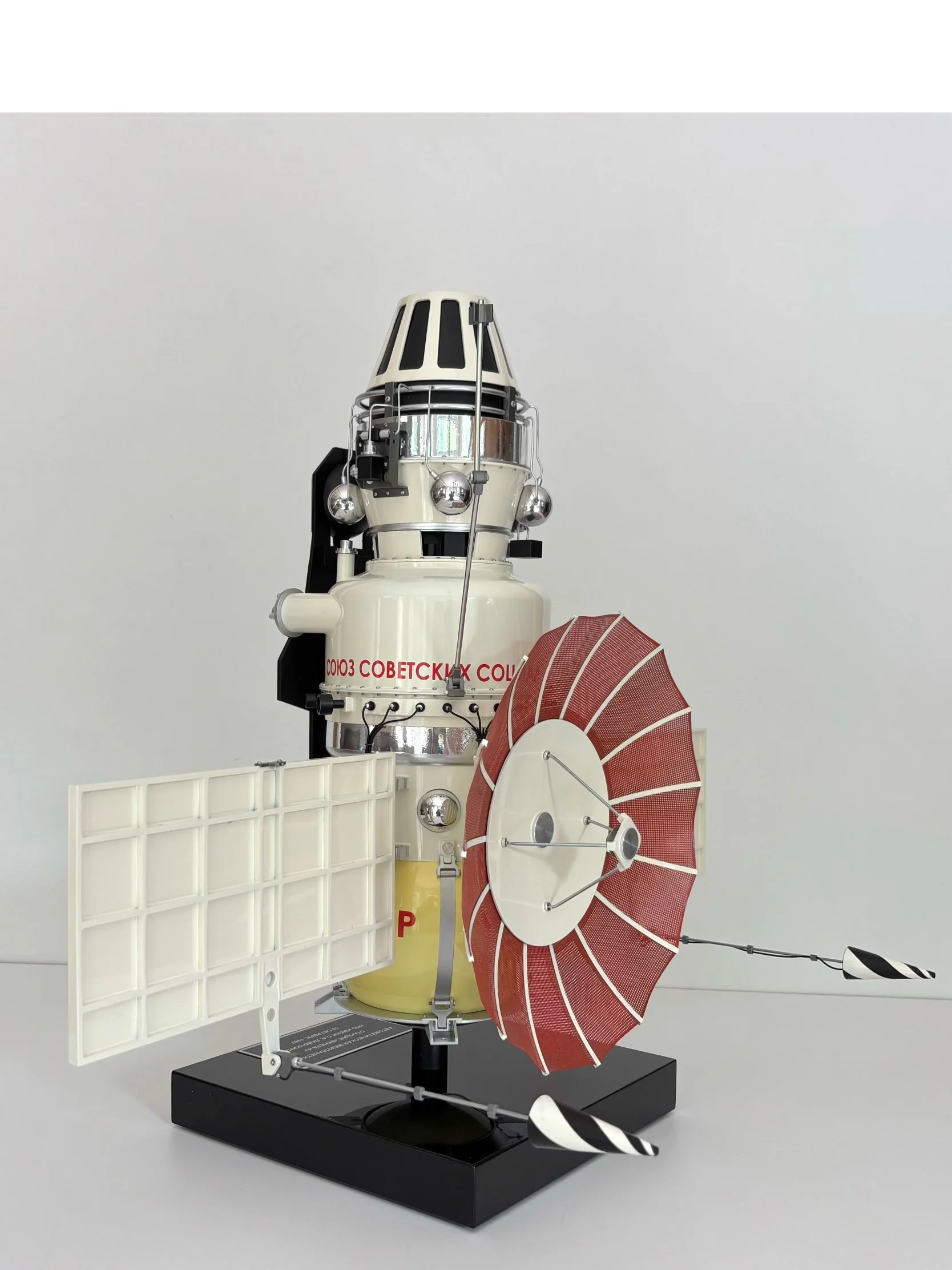Rare Venera 4 Venus Probe Model
Rare Venera 4 Venus Probe Model
Rare Venera 4 Venus Probe Model , a probe in the Soviet Venera program for the exploration of Venus, which, in 1967, became the first successful probe to perform in-place analysis of the environment of another planet.
This highly detailed handmade model is constructed of metal, fibre-reinforced plasticand resin composite elements, stands 22″(56 cm) tall, with open solar panels 27” (69 cm ) wide, the model stands on the black base 10” x 10” x1.5” with an affixed plate reading: “Automatic Interplanetary Station Venera-4, NPO named after S.A. Lavochkin, October 18,1967.”
The Venera 4 model consists of orbital and lander modules, parabolic and low gain antennas, solar panels, and a magnetometer bracket. In fine condition. Antennas and solar panels are moving in different directions.
On June 12, 1967, the Venera-4 was launched from Baikonur to explore the planet Venus. The probe was comprised of an entry vehicle and an orbital spacecraft and was the first successful probe to examine the environment of another planet. The data it sent back showed that the atmosphere of Venus was composed primarily of carbon dioxide with a few percents of nitrogen and below one percent of oxygen and water vapors. The main station detected no radiation belts; relative to Earth, the measured magnetic field was 3000 times weaker, and the hydrogen corona was 1000 times less dense. No atomic oxygen was detected. All the data suggested that water, if it had been present, had leaked from the planet long before.
